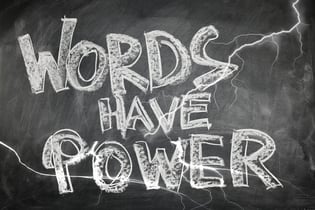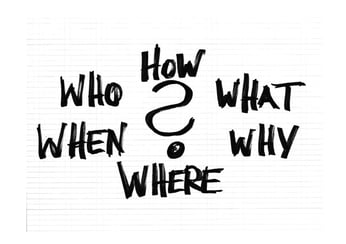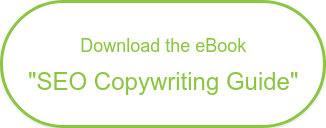SEO copywriting: A content writing strategy
- Home
- SEO copywriting: A content writing strategy
Updated 2nd June 2020

SEO copywriting is often considered by many as a challenge, but it can be quite simple if you follow a structured plan. Done well, good website copywriting should be easy to understand, and coherent and can prove to be one of the the most effective techniques for on-page SEO.
Note: You can download the guide as an eBook here.
Increase the authority, trust and ranking of your website
Contemporary SEO copywriting encompasses everything it takes to craft compelling content that people would like to read, share and promote. Engaging in SEO content writing increases your authority and trust in search engines, and helps increase the ranking of your website for keywords about your niche.
The following guide on SEO content will take you through the process of creating SEO-friendly and readable content, with techniques to generate effective keywords and ways to use them efficiently. It can act as an SEO copywriting course that you and your team can refer back to.
Before writing: Purpose
What is SEO writing?
SEO writing doesn't have a lot to do with writing itself - we will presume that basic writing skills are available to you. The first and most important step is to decide on a topic for your SEO articles. What would be the context of the content you plan to post on your site?
The trick here is to remember that your readers want some benefit from reading your post. The mistake people usually make in their posts is they write about things they think are good, and pay little attention to what the readers want to read.
Make your audience the target of your posts, rather than your company, product or service.
Your post should do the following:
- Solve a Problem: e.g. a step-by-step guide - a simple example that targets a set of readers and benefits them at the same time.
- Inspire Action: Once you have compiled your content that focuses on the reader, it will have the power to inspire them towards action. By the end of your post, give an opinion or something that brings their attention back to you, hence making them remember you each time they use your advice.
Keyword Research
Once you have selected your topic, find a keyword that will help rank your webpage. Your content SEO should begin with detailed keyword research. Look for keywords that are relevant to your topic. Keyword research helps you compile a comprehensive list  of key phrases and keywords relevant to your niche, based on which you would be ranked.
of key phrases and keywords relevant to your niche, based on which you would be ranked.
Here is a 3 step SEO content marketing strategy for keyword research:
Step 1: Search
Go to Google, Bing or Yahoo and search for possible keywords that describe the topic of your content. For instance, if you are writing about a weight loss diet, search for “weight loss”. Observe how people have used the keyword on their website and what information they are providing to readers regarding that keyword.
Step 2: List relevant Keywords
Going through these websites will help you come up with related keywords that can help you compile a list of search terms based on which your readers would find your website. If the content topic is clear and well-defined, you will have little trouble assembling relevant search terms and your key selling points.
What might be the keywords they use to find you?
Put yourself into the shoes of your audience and think of all the possible ways they are likely to find you. List down all the relevant terms and related combinations.
Step 3: Landing Pages
The final stage of keyword research is to build the best landing pages for each of your main keywords. A landing page is a page where you are going to post your SEO-optimised copy. It should be designed to draw in the audience who arrived at your page through searching for a particular keyword. This could be a blog post or a dedicated page optimised for a particular keyword. Also, confirm that there is a landing page for all the relevant key terms you decide to target.
Note: It is possible to optimise a single page for many different keywords, as long as they all match the same intent of the user's search phrase. Don't try to optimise one page for many different search topics. This is not a good SEO content strategy.

Next, search your shortlisted keywords on Google. Scan the entire page for bold phrases and words that are not your keywords. The trick here is that Google makes these terms bold as it considers them similar or relevant to your key search. Select a few of them and sprinkle them through the content. Make sure that the words are relevant to your content. Always consider the quality of the writing first and writing for SEO second.
Keyword research is the basis on which your content stands. It solves half of your SEO and content marketing problems. The better your keyword research, the more relevant your key terms, and the better chances you have to target a large number of people and increase your page rank.
Note: Don't worry too much about SEO keyword density. Just make sure that you don't use the same keyword many times, this is called 'keyword stuffing' and can harm your rankings.
PHASES OF CONTENT CREATION
Structure for SEO copy text
As you start writing keep into consideration the structure of your text. It has a significant role to play in SEO and therefore is your key to higher Google ranking. Think of your text as the skeleton that defines the body of your article. The entire design of the text must be attractive and engaging.

Inverted pyramid approach
Make use of the inverted pyramid approach to construct every post, paragraph and sentence.
When you read a newspaper notice how it addresses all the important questions relevant to the topic from the beginning of the article to the end.
 The leading sentences, also known as the 'lead' would answer questions such as: When, Why, What, and Who.
The leading sentences, also known as the 'lead' would answer questions such as: When, Why, What, and Who.
The initial sentences of the post would give you a feeling for what the writer plans to say next. Further into the article, you find the secondary details. Then come the stats, quotes and relevant supporting information.
The process of providing preliminary information before secondary details is called 'Frontloading'. It is also known as the inverted pyramid approach of writing content for SEO.
SEO copywriting tips
Here is how you will improve the readability of your post and make use of frontloading principles:
You have 30 seconds to make an impression on your audience
Post Level
Remember that as your keywords bring your audience to your post, you have 30 seconds to make an impression on them while they go through the introduction and decide whether they wish to read further or not. The key here is to make the most out of those first 30 seconds.
Your introduction must be the most compelling. It is your story’s lead. Entertain your readers using infographics, quotes, and attractive words, and by indirectly highlighting the benefit to be gained from reading more of your post.
If you are aware of how traditional advertising campaigns work, you will find that the introductory concept is very similar to that.

When designing a campaign, designers and copywriters are advised to plan a benefit strategy or a strategy statement. The strategy statement highlights what the entire message of the campaign is about and what benefits the product/service will give.
Similarly, a strategy statement is designed when writing an introduction. Use a mix of key terms and the core message of your article to compile an introduction in either an entertaining, emotional or thrilling tone.
Paragraph level
Followed by the post-opening, the first line of your paragraph gives a summary of what your paragraph would be about. To be more precise, you have to highlight the “point” at the beginning of your paragraph.
In simple words, you could use the very common yet effective structure:
- Problem
- Solution
- Tip/conclusion

So now you have a good structure, but if the rhythm of the article is too consistent, with no twists and turns, your reader may soon lose interest. Note that you are not writing an academic paper that requires only stats and no fun. Your article could have any tone that matches your personality or the persona that you are targeting. It can be humorous, serious, or even nerve-wracking. You can achieve this by using graphics, quotes, images, videos, etc.
Let's elaborate on this structure and what it should include, in detail:
First three paragraphs
Most readers take only a minute to quickly review the first three paragraphs on the page. The first three paragraphs also refer to the content blocks. It is a pattern similar to that of their initial search: search engine results. Most of the clicks are based on the headings and the description beneath.
To make the best of this reading pattern, create an outline of your post, allowing the most informative sections of your post to appear. Structure your content in such a way that the most important points of your article are listed in the first three levels of your content and make sure that all these points are unique. Avoid making your post appear clichéd.
Jon Morrow, in his blogging course, explains how to write the most unusual, novel and unconventional content before repeating an already quoted fact. Pay attention to areas where the content could be unique, regardless of how common your topic may be.
Use a lot of subheadings
If you know a little about how to write SEO content, you will know the rule of 80/20. If not, let us review it again. The rule states that 80% of the readers are always going to review the headings before they read the content.
Half of them are going to read only those paragraphs of your article which have headings they feel are relevant to their search. Out of 10, 8 people read the headline while 2 read the entire post.
You can use the same principle for the subheadings. Think of every subheading and the section that follows as a complete post. Assume that more than 80% of the audience will read the heads and subheads. With attractive and engaging subheadings, you can draw the attention of your readers towards the independent sections of your post.
Keep scanners and skimmers in mind
While it is true that most of your readers may not read the entire post, but there will always be those who will. Studies suggest that most web readers keep switching between scanning to reading modes. Some posts, they will go through in seconds while other content they will read carefully and attentively. As they reach to a section of particular interest, they shift from scanning mode to reading mode.
As the scanners/skimmers use the subheadings as anchor points, it is essential to consider them while structuring your post.
When you structure your post, ask yourself:
Is my post relevant for all kinds of readers?
Both readers and skimmers?
Are skimmers easily going to arrive at their point of interest?
If yes, then you have a good subheading, or else, try another one. This increases the attention of skimmers and brings faster shifts in their reading modes.

Block quotes: Authorise the Authenticity
Quotations are always popular with readers. A block quote often works as bait to pull readers in. It increases the interest of your reader towards the information you are trying to give away. People also trust posts that provide references and facts.
Other than trust, a quoted text authorizes the authenticity of your research. It creates an impression that you really know what you are talking about, and whatever advice/ suggestions you are giving to your readers are based on real work/knowledge.
“If used effectively, block quotes can act as a significant piece of evidence, while lending new perspectives and voice to your narrative. If used irrelevantly, these quotations can clutter and interrupt the flow of your text.”
Quotation has another important purpose. It breaks the rhythm of your article, referring to the twists we discussed earlier. It keeps changing the psychological reading modes of the reader which is important in keeping their attention.
Internal Cliffhangers
Internal cliffhangers are writerly devices that leave readers wanting to know more. They are an effective way to grab the attention of your reader. As readers come across them, they'll stay a little longer as these elements act as a call for immediate action.
Use the following cliffhanger phrases to keep your audience engaged:
- What is the bottom line?
- This is crazy
- It gets worse/better
- Do you know the best part?
- Are you wondering?
- What now?
- But…
A conversational structure
Increase interaction. In communication skills training, you are always advised to make your buyers feel like you are completely engaged with them, and that their concerns are addressed by a real person. Similarly, your readers must feel like they are talking to you in real-time. Use a question-and-answer style. Such a style of blogging with lots of “your” and “you” makes your reader feel important and included.
Have a casual tone that draws engagement and interest.
Include interactive elements
Tweet boxes, GIFs, surveys, polls, and calculators: elements that are not as common as pictures, however, you see a lot of them. Top copywriters always consider them to be elements of significant importance. Open any popular blog and you will find 2-4 interesting GIFs.
Similarly, tweet boxes are an interesting formatting tool. By developing well-designed tweet boxes, you not only make your content look great but also increase the flexibility of your content for sharing.
Calculators, surveys and polls also increase the engagement factor of your post and inspire the readers to stay interactive with the content.
Short sentences
Mostly, the length of the sentence is not an issue for copywriting SEO. As most good bloggers develop sentences longer than 15 words. The average sentence structure comprises of 12-14 words.
Long sentences are not bad. But short sentences are more interesting and easier to read. They increase curiosity and encourage your reader to move towards the next line. Try short sentences. It increases clarity and makes the content look snappy. Also visually, they are less scary.
To edit all your long sentences that you feel would take interest away from your content, use the Hemingway app. It helps you rewrite long sentences into short and readable sentences. Once you are ready with your post, paste it and highlight the best sentences.
[Edit: Another useful app for improving your writing is Ink. This free app can help you adjust your content for grammar as well as SEO]
Spacing
Designers take years to learn good spacing techniques. For example, according to a psychological survey on Typography, different typefaces with different spacing were used for the same content to test if it had any impact on the choice of reading.
More than 70% of the people rejected reading information in serif texts while the same text was more widely read in Helvetica, a better-spaced font. The point here is that the visual appearance of your text matters.
Cluttered and disoriented text is never appealing. People want visual breaks. Why is it so easy to read a slide show and so difficult to read a research paper with long sentences and long paragraphs? Use plenty of whitespace around headlines, paragraphs and images.
The design of your web content is as important. When you've created your content and it has followed the guidelines, what if the visual representation makes them leave the page?
Title
You've done your keyword research and you've written your content. Now come back to the top and see if you still want to use the same title for the content.
90% of people would want to change the title at this stage.
Here's why: the title now needs to have a direct relationship with the keywords and the content.
Titles shouldn't be too long (no longer than 160 characters) or too short. Short titles won't be any good for Google searches.
Locate the page on your website with short title tags. Add additional words, one or two to the title tag that you feel your audience would use when they search for the target keyword.
For example:
- How to, Tips, Simple, Fast...
- Best, Guide, When, Review...
Subtitle
Use a long-tail keyword in your subtitle. For example “White Hat SEO case study: Generate traffic in 7 days”. The keyword here is "White Hat SEO", but then “generate traffic” gets some extra attention.
Ask for feedback
To open yourself up for criticism is often hard, especially when you've worked very hard at it. However, when you edit your text you should always ask for feedback. Before publishing your post, ask your friends or coworkers to read the post in the light of these SEO copywriting techniques. Feedback lets you know of what your audience or a third person feels about the post and it keeps your mind open to any improvements that may be required.
Remember that your post is for the audience and not yourself, therefore, effective criticism is eventually going to work in your favour.
Conclusion
If you want to ensure that your content increases your web ranking, it's important to carefully follow these SEO guidelines. Writing for SEO is a technique that gets into your skin after a little practice. Once you start applying all the techniques you will see how your productivity will start to increase and how your style will naturaly find the right keywords and create the right structure.
Learn more about our SEO services to let us help you increase your brand today.



